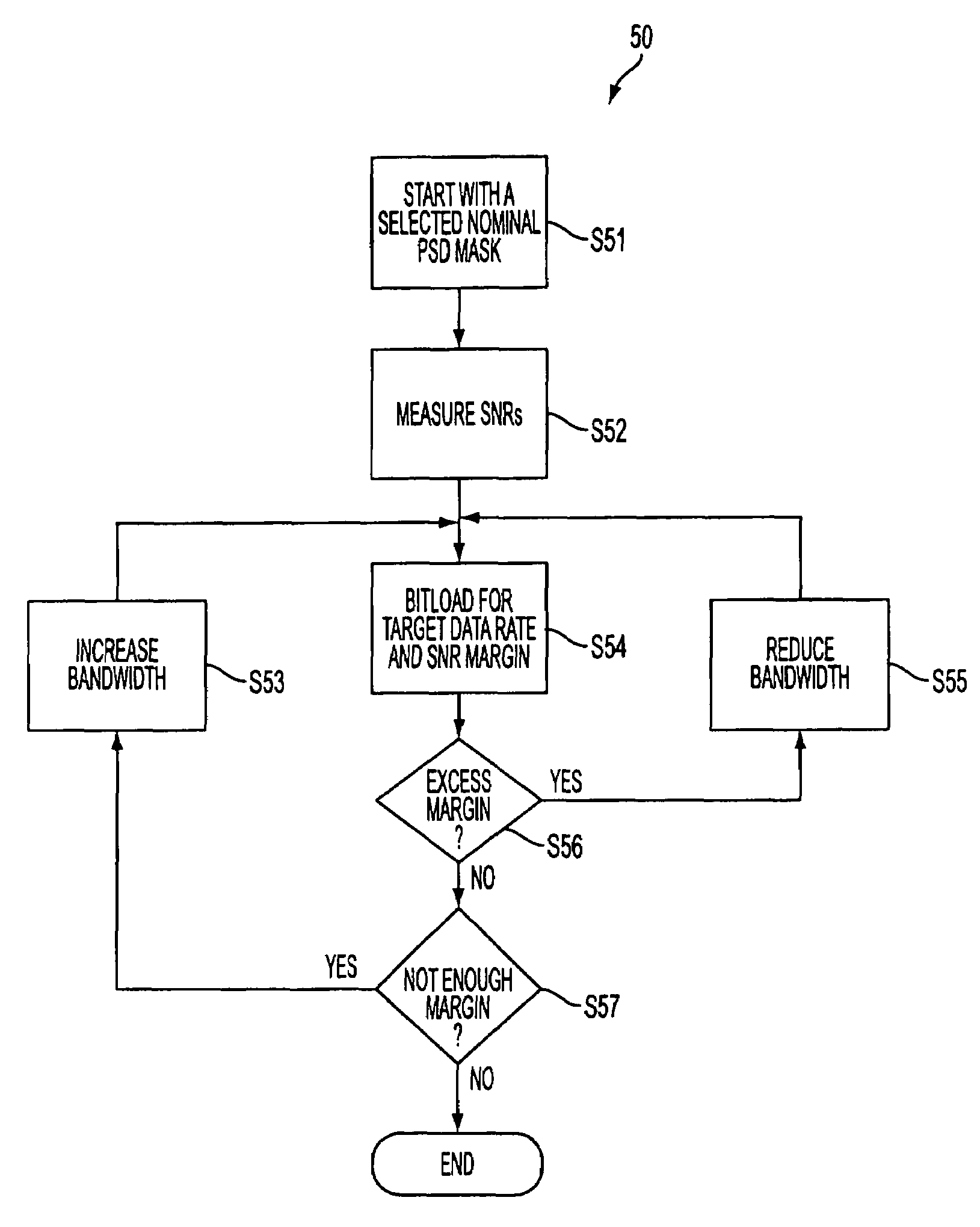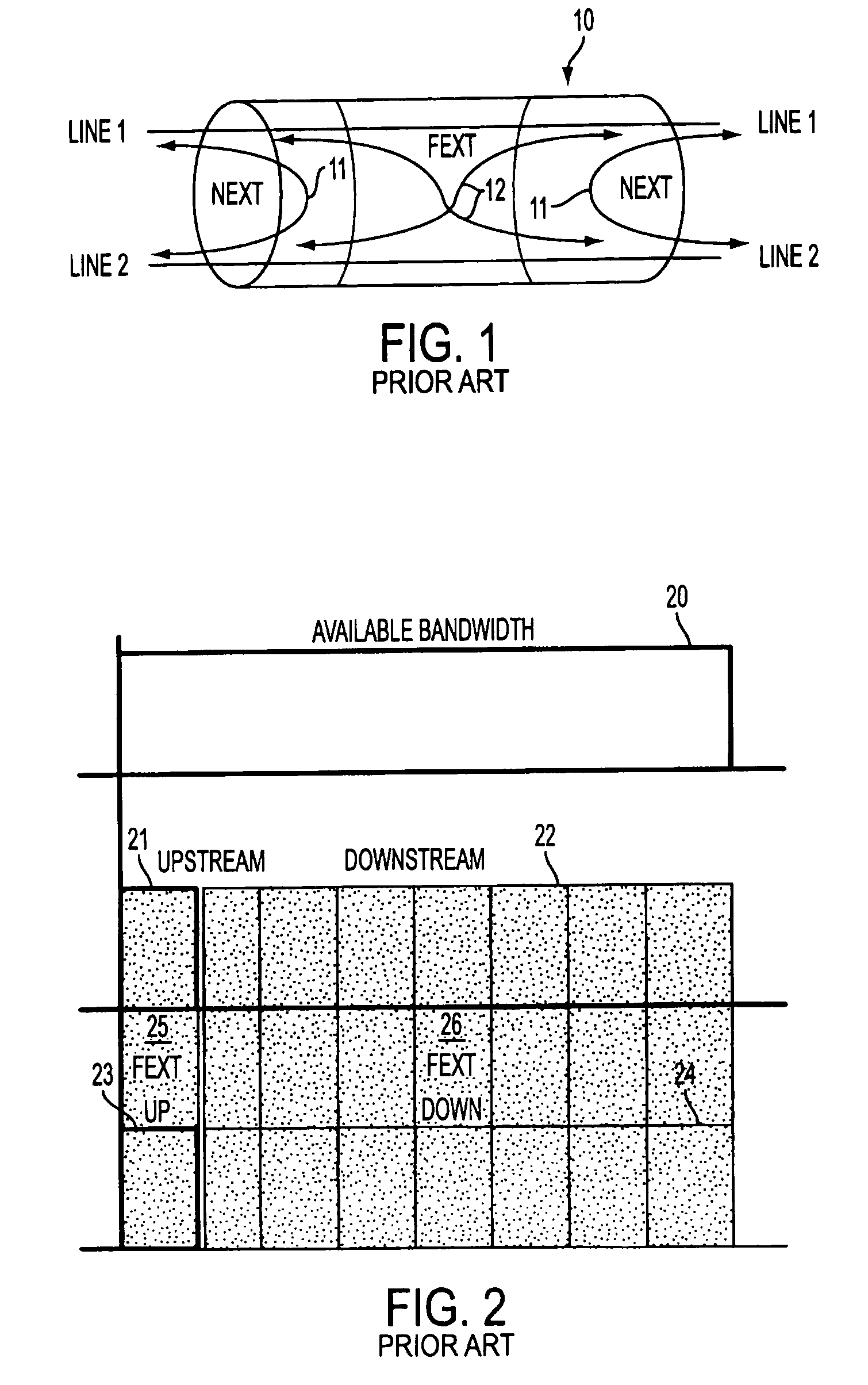Iterative waterfiling with explicit bandwidth constraints
a bandwidth constraint and waterfiling technology, applied in the direction of multi-frequency code systems, transmission path sub-channel allocation, duplex signal operation, etc., can solve the problems of cross-talk interference to be induced into proximately, cross-talk becomes a significant problem, and is subject to attenuation, so as to reduce next interference
- Summary
- Abstract
- Description
- Claims
- Application Information
AI Technical Summary
Benefits of technology
Problems solved by technology
Method used
Image
Examples
Embodiment Construction
[0030]The present invention provides an iterative method of allocating bandwidth in a twisted pair modem communication network in order to maximize communications speed while reducing NEXT interference. The present invention further provides for adjusting the power and bitloading rates of transmitted signals in order to achieve maximum data transfer with an appropriate signal to noise ratio. The description of the embodiments herein is meant to be illustrative only and not limited to the examples given.
[0031]FIG. 5 shows a flowchart of steps 50 that illustrate one embodiment of the present invention. The process of FIG. 5 is repeatedly performed for each communications channel line as is shown in FIG. 8 until an equilibrium point is reached. Once the bandwidth has been accordingly adjusted for a given channel link, the next channel is selected for the process. The process 50 begins in step S51 where communications begin using a nominal predetermined power spectral density (PSD) mask...
PUM
 Login to View More
Login to View More Abstract
Description
Claims
Application Information
 Login to View More
Login to View More - R&D
- Intellectual Property
- Life Sciences
- Materials
- Tech Scout
- Unparalleled Data Quality
- Higher Quality Content
- 60% Fewer Hallucinations
Browse by: Latest US Patents, China's latest patents, Technical Efficacy Thesaurus, Application Domain, Technology Topic, Popular Technical Reports.
© 2025 PatSnap. All rights reserved.Legal|Privacy policy|Modern Slavery Act Transparency Statement|Sitemap|About US| Contact US: help@patsnap.com



